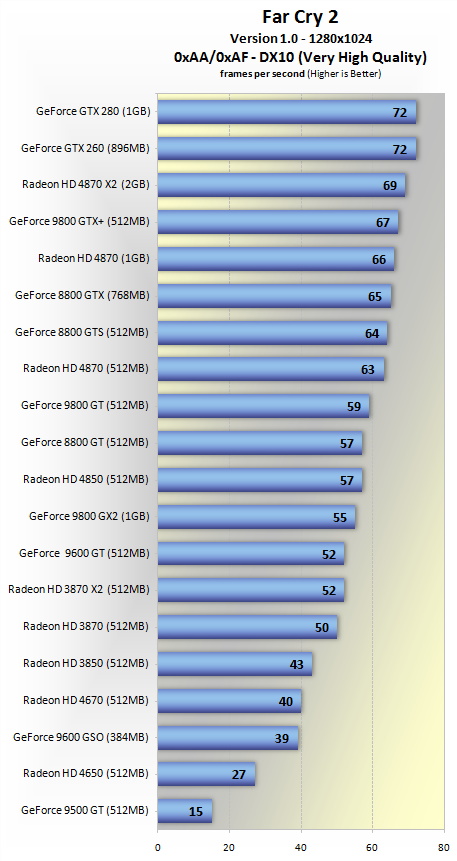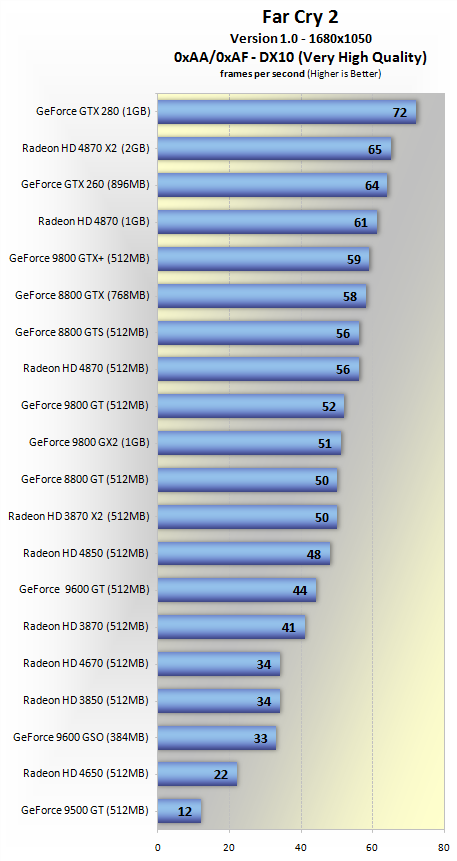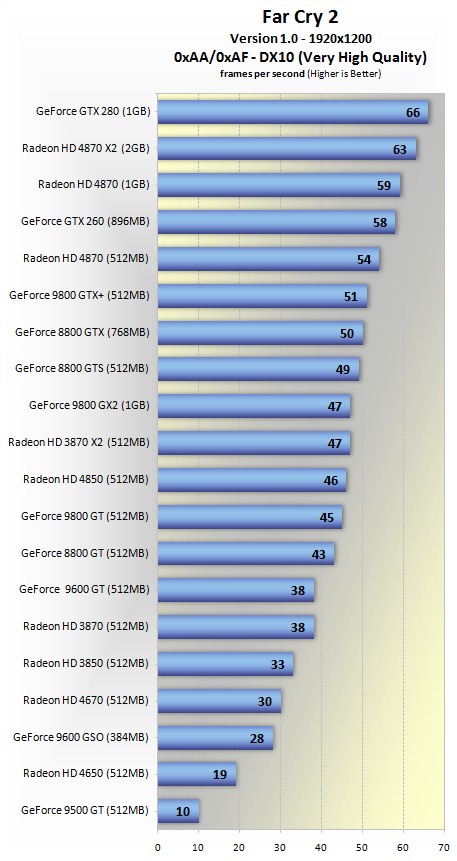Benchmarks: Very High

At 'very high' visual quality settings, the high-end gear like the GeForce GTX 280 and GTX 260 cards ran into a bit of a CPU bottleneck at this resolution (1280x1024) delivering smooth gameplay at 72fps.
While we don't think there is a huge difference in visual quality between the Ultra High and the Very High settings, the mid-range and low-end graphics cards perform significantly better using the latter.
The Radeon HD 4870 X2 reached an average of 69fps, followed by the GeForce 9800 GTX+ of all graphics cards. Amazingly if you move your attention towards the bottom of the graph you will notice that the Radeon HD 3870 averaged an impressive 50fps! Even the GeForce 9600 GSO did well with 39fps, while the 9500 GT continued to prove why no gamer should go near it.

So, 1280x1024 may not be that fancy if you use a big monitor but 1680x1050 is getting up there, and the Radeon HD 3870 averaged over 40fps. Meanwhile the GeForce 8800 GT/9800 GT graphics card averaged over 50fps, and the 512MB version of the Radeon HD 4870 pushed 56fps.
Anything over 45fps on average kept us more than happy in Far Cry 2, so anything equal to or greater than a GeForce 9600 GT is going to be impressive in this latest first person shooter.

It might be the fact that Crysis spoiled us a bit too much, but we are amazed by these results with the GeForce 9800 GT almost touching on 45fps. The Radeon HD 4850 just snuck over the line with 46fps. The age old GeForce 8800 GTX managed an impressive 50fps, while the new GeForce 9800 GTX+ was a whisker faster with 51fps.
Meanwhile the GeForce 9600 GT and Radeon HD 3870, along with the five graphics cards under them did struggle to deliver playable performance. In all fairness, the GeForce 9600 GT and Radeon HD 3870 performance was still acceptable but the other five did fail to deliver.